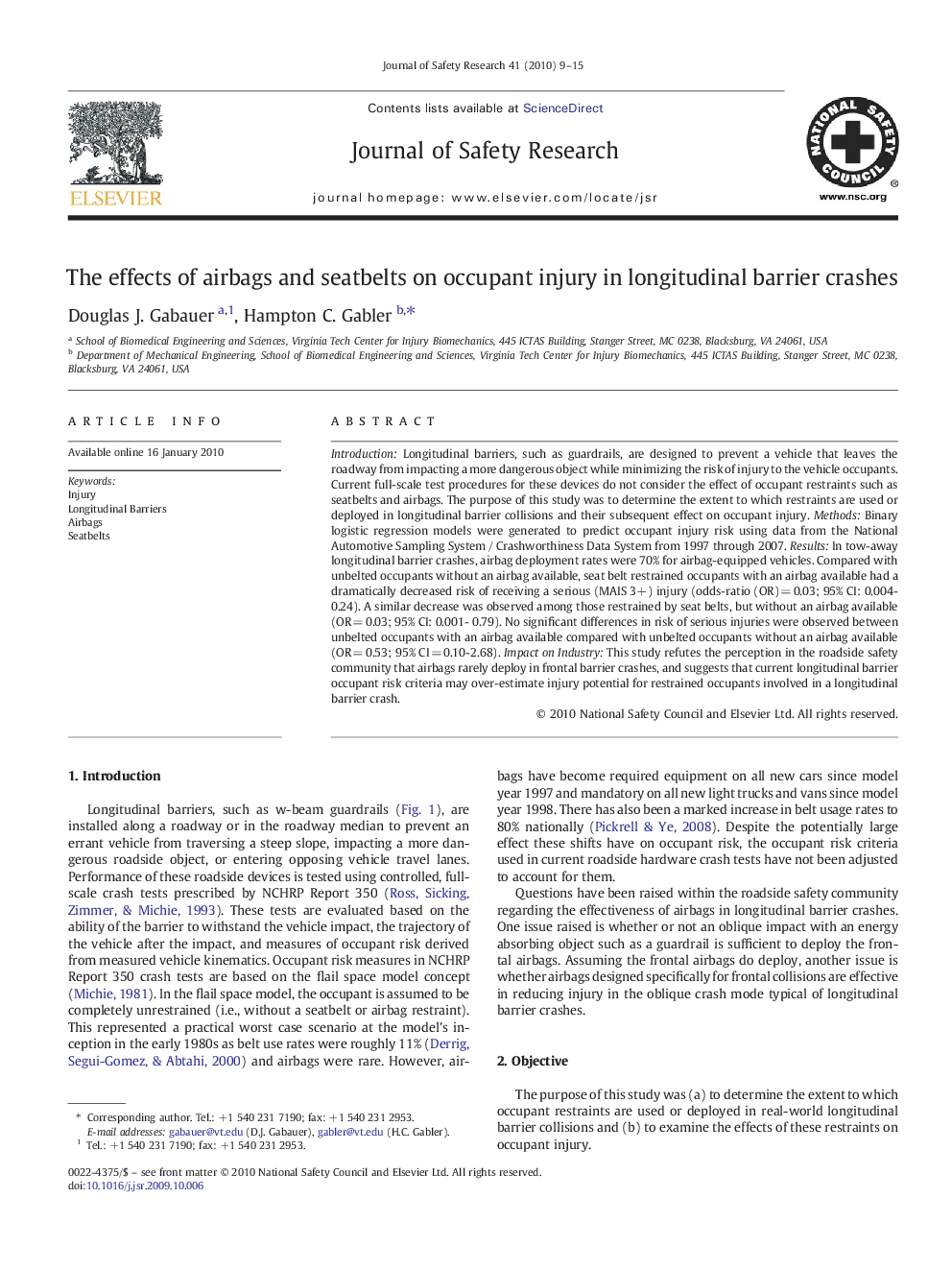| Article ID | Journal | Published Year | Pages | File Type |
|---|---|---|---|---|
| 587535 | Journal of Safety Research | 2010 | 7 Pages |
IntroductionLongitudinal barriers, such as guardrails, are designed to prevent a vehicle that leaves the roadway from impacting a more dangerous object while minimizing the risk of injury to the vehicle occupants. Current full-scale test procedures for these devices do not consider the effect of occupant restraints such as seatbelts and airbags. The purpose of this study was to determine the extent to which restraints are used or deployed in longitudinal barrier collisions and their subsequent effect on occupant injury.MethodsBinary logistic regression models were generated to predict occupant injury risk using data from the National Automotive Sampling System / Crashworthiness Data System from 1997 through 2007.ResultsIn tow-away longitudinal barrier crashes, airbag deployment rates were 70% for airbag-equipped vehicles. Compared with unbelted occupants without an airbag available, seat belt restrained occupants with an airbag available had a dramatically decreased risk of receiving a serious (MAIS 3+) injury (odds-ratio (OR) = 0.03; 95% CI: 0.004-0.24). A similar decrease was observed among those restrained by seat belts, but without an airbag available (OR = 0.03; 95% CI: 0.001- 0.79). No significant differences in risk of serious injuries were observed between unbelted occupants with an airbag available compared with unbelted occupants without an airbag available (OR = 0.53; 95% CI = 0.10-2.68).Impact on IndustryThis study refutes the perception in the roadside safety community that airbags rarely deploy in frontal barrier crashes, and suggests that current longitudinal barrier occupant risk criteria may over-estimate injury potential for restrained occupants involved in a longitudinal barrier crash.
